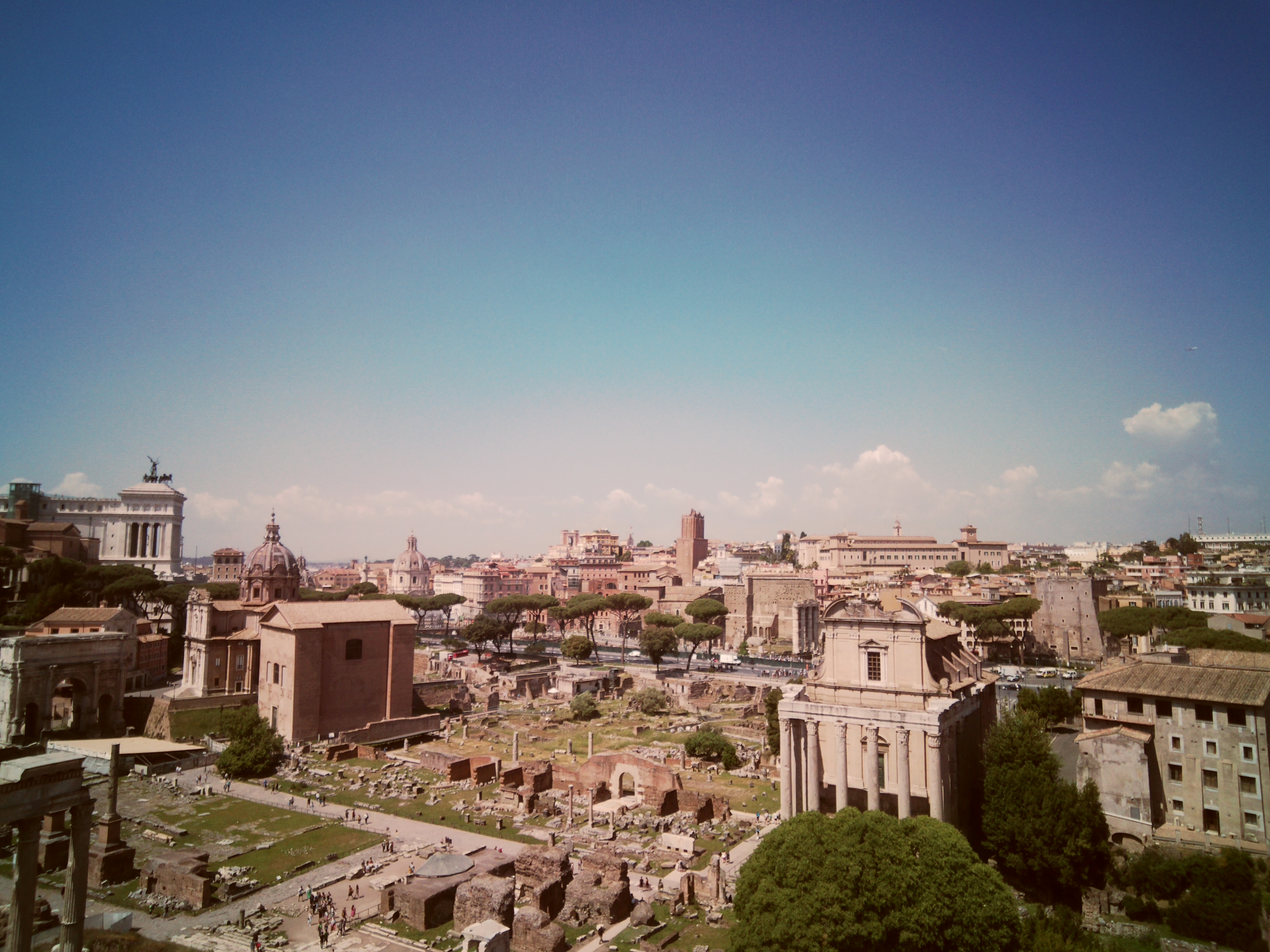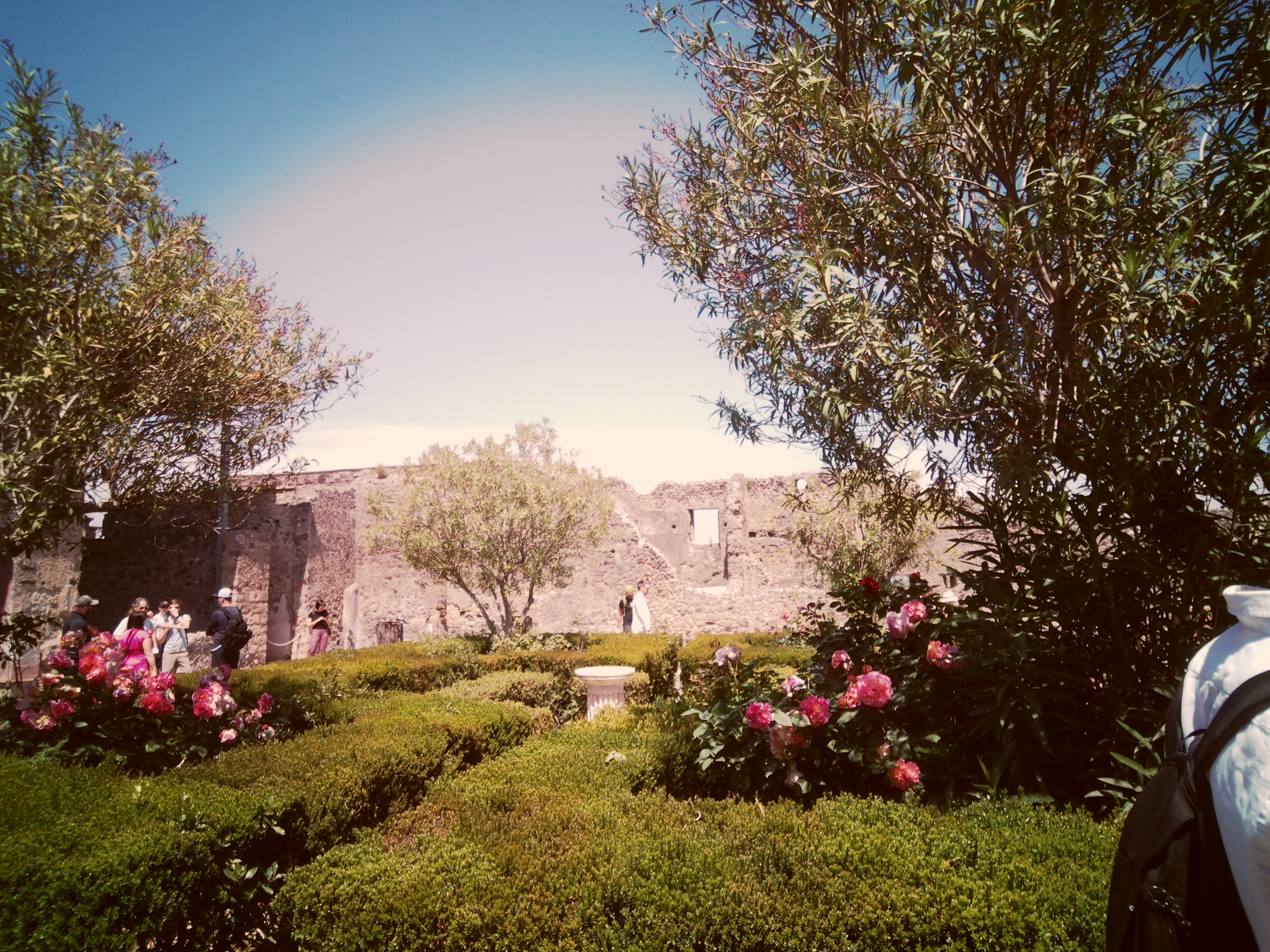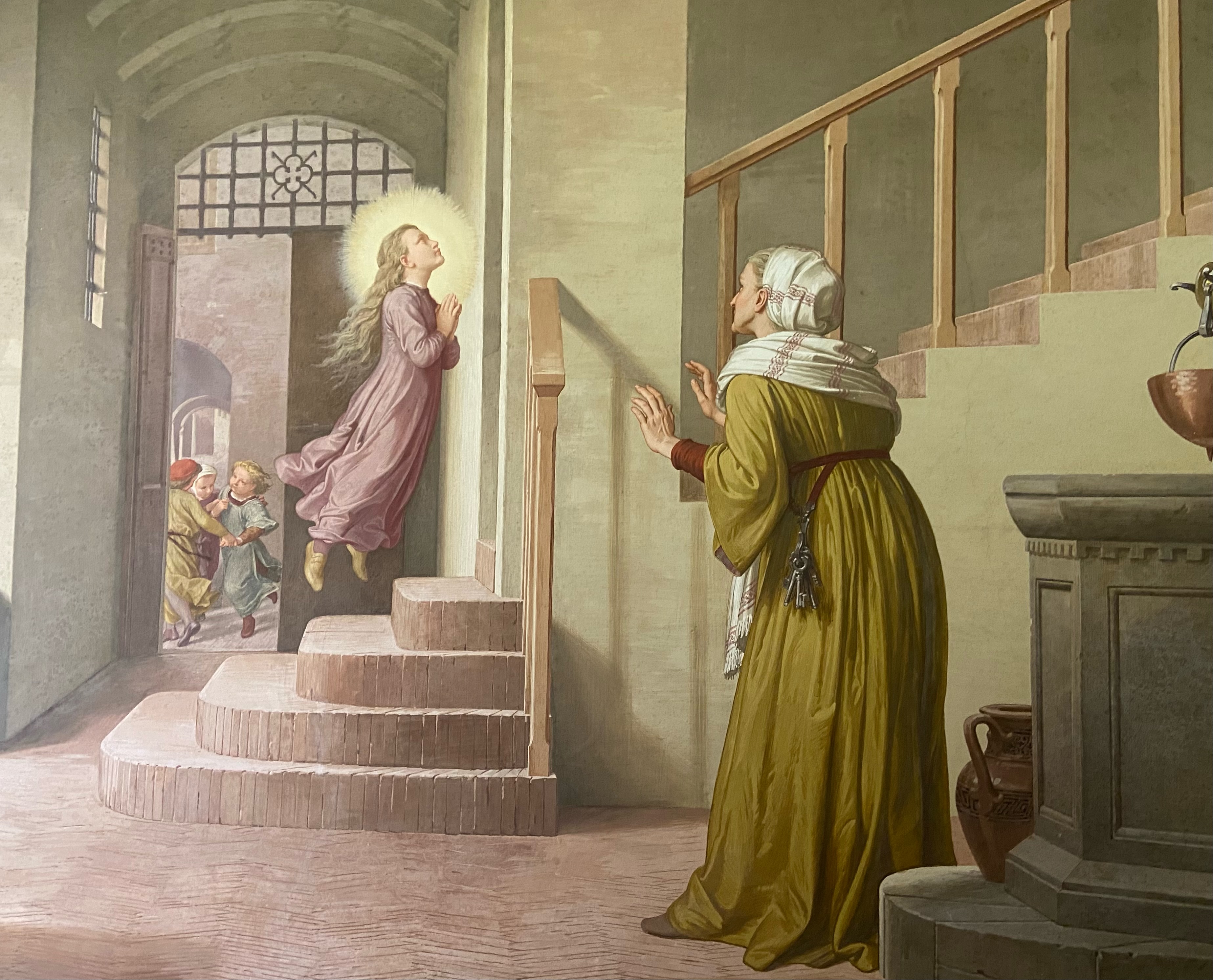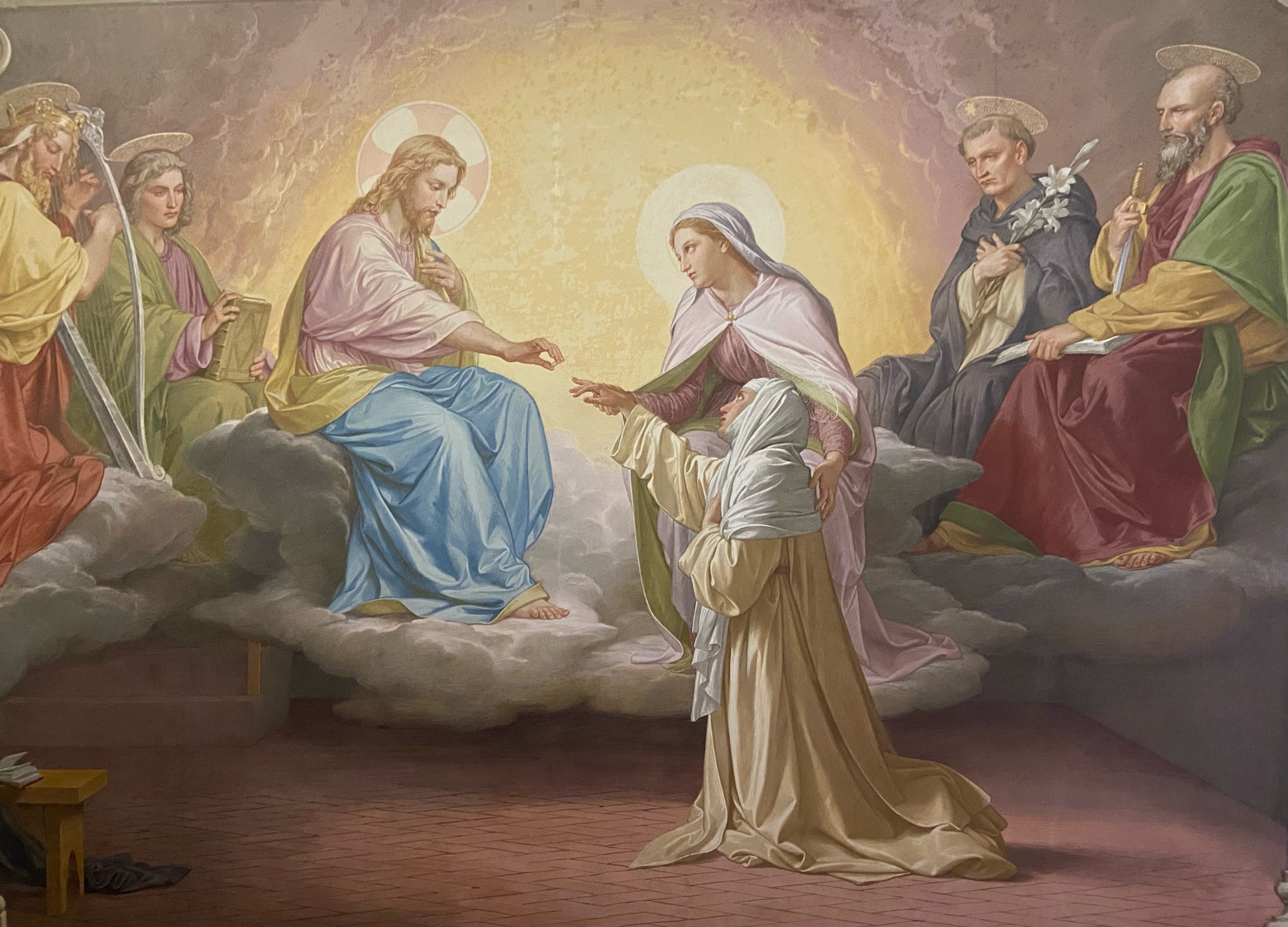
Hayden Anderson is an Honors College student at FIU studying marketing with hopes to go into the fashion industry. Hayden wants to travel the world to experience as many cultures as possible. She enjoys taking pictures, thrift shopping, and reading books. Her goal is to create a non-profit that helps underprivileged girls where a portion of the proceeds from her clothing line will go. She defines success as knowing she has helped as many people as she can.
Photograph taken by Emma Cairo of FIU
Roma as Text
By Hayden Anderson of FIU on May 18th, 2022



Photographs taken by Hayden Anderson// CC by 4.0
Rome is one of the most spectacular cities in the world. No other place immerses you in the culture and history to the extent that you feel as if you were a Roman yourself. Drinking from fountains in the street spewing water from the infamous aqueducts, strolling along the decadent piazzas during the passeggiata, and feasting on traditional dishes allows me to truly walk in the footsteps of ancient Romans. The ancient and modern world are so intertwined here that you can have a 2000 year old historic monument and a cell phone store on the same street; it’s incredible. Every piazza and street have their own niche traits that add to the unique atmosphere of the city. I could spend a lifetime in Rome, and it still wouldn’t be enough.
Originally known as the Flavian Amphitheater, the Colosseum was built in 70 AD by Vespasian and was finalized in 80 AD by his son Titus. It is an absolute architectural masterpiece. It is astounding that they were able to create a structure of that size without electricity and in the span of only 10 years. Romans were extremely inventive for their time to say the least. The Colosseum is a perfect depiction of human nature, and our morbid sense of humor, in the sense that they built a massive amphitheater with impeccable columns and towering arches just to watch people slaughter each other. They even created trap doors that released blood-hungry animals on the unlucky individuals for pure entertainment . Their ingenuity, as barbaric as it may be, is incredible. Despite destruction of the exterior structure, it continues to stand as a triumphant symbol of Ancient Rome.
Pompeii as Text: Divine Feminine
By Hayden Anderson of FIU on May 18th, 2022



Photographs taken by Hayden Anderson// CC by 4.0
Like many other re-discovered ancient cities, Pompeii emerged from the ash in 1748. The city was frozen in time for 17 centuries covered by debris from the eruption of Mount Vesuvius in 79 AD. This catastrophic event killed around 2000 Pompeiians and devastated the city and surrounding areas. While the lava destroyed all wooden elements, a large portion of the internal brick and stone structures remained intact. The destruction that the eruption caused is undoubtedly sorrowful, but it also helped to preserve the modern (for its time) city allowing us to have to further study the lives of ancient Pompeiians. The architectural resilience is absolutely astounding given that it was constructed more than 2 millennia ago.
Nestled on the outskirts of Pompeii, the Villa of Mysteries houses one of the most incredible pieces of ancient art I’ve ever seen. Spanning over three walls, the fresco depicts the transition of a woman as she embarks on a rite of passage into a cult. While this is the most popular interpretation, the painting itself is subjective. When looked upon through the female eye, we can see a woman emerging into her true self and fully embracing her femininity. The fluidity of her poses is absolutely divine and truly captures the essence of her new-found self-expression. In the beginning of the painting, on the left side, we see the woman concealed by her clothing, being shielded by her innocence. Her body language is timid as though she is hiding from herself. As we move our eyes to the center of the painting, we see the woman talking to another female who appears to be someone of higher power given her decadent clothing and assertive posture. The woman, who has shed some of her coverings, still displays a lack of confidence based on downward gaze. As we are drawn to the third wall, we can see that the woman now holds herself proudly with her scarf billowing around her, finally basking in her liberation. The transformation throughout the painting is a beautiful tale of self-discovery and femininity. Having withstood the hands of time, and a natural disaster, the fresco encompasses the triumphs and perseverance of women through the centuries. Mother Nature is, after all, a woman.
Tivoli as Text: Hadrian’s Haven
By Hayden Anderson of FIU on May 24th, 2022



Photographs taken by Hayden Anderson// CC by 4.0
Constructed as a sanctuary to escape the outside world, Hadrian’s Villa is housed in the serene town of Tivoli. The picturesque scenery and the remote location made it the perfect getaway from the chaos of Roman life. Spanning over 200 acres, the villa was the peak of luxury during its prime. The expansive pool lined with Roman sculptures is just one of the villa’s many luxurious attributes. The room that truly solidified the intention of Hadrian’s refuge was the Maritime Theatre, also known as the Island Villa. This spectacular work of architecture features a central, circular platform surrounded by a moat. It’s commonly described as a villa inside a villa because it was equipped with everything Hadrian could have wanted. He spent copious amounts of time in the room reading all kinds of literature, painting, and enjoying various entertainments. It’s truly one of the greatest features in a house I have ever seen and goes to show the sheer wealth of the Roman Emperor.
More beautiful than the villa itself, was the love of Hadrian and Antinous. While it was by no means the only queer relationship in classical antiquity, it is one of the most well-known. Antinous was a strikingly-handsome boy from Greece who was obviously of lower class than Hadrian. Downward relations were very common during the time, but their story was more than just a physical connection. Absolutely enthralled with each other, Antinous’s tragic passing took an incredible toll on Hadrian. Immediately after his death, Antonius was deified upon Hadrian’s request which was unheard of for someone of his status. All around the villa, and in many Roman museums, statues of Antinous can be found as a beautiful depiction of love and devotion that transcends even after death.
Florence as Text
By Hayden Anderson of FIU on May 30th, 2022



Photographs taken by Hayden Anderson// CC by 4.0
Florence is the cooler, younger sister of Rome. Even though it was founded 700 years after Rome, the cities’ history is just as rich and intriguing. The spectacular city is home to one of the oldest, and greatest, architectural marvels of all time, Brunelleschi’s Dome. Not to mention, the most iconic statue ever created, the David, is also within walking distance. While these are both incredible works of art, Botticelli’s paintings in the Uffizi Gallery are the most astounding in my opinion.
The Birth of Venus is one of the most infamous paintings of the Renaissance era and one of Botticelli’s finest art works. In the painting, Venus is featured standing on a clam shell in the ocean having just emerged symbolizing her birth. She is fully nude, but mostly concealed by her flowing hair and hands. Her left breast remains exposed signifying the embrace of her femininity while preserving her innocence. What makes it even more beautiful is how Botticelli drew her figure; she has the body of a real woman. All the female statues and paintings I’ve seen throughout this trip have all been created in admiration of the female body, curvy and full of life. It’s incredible to see women depicted in such empowering ways. Through this class, I have a new-found appreciation for art in a way I never thought I would.
Sienna as Text
By Hayden Anderson of FIU on May 30th, 2022



Photographs taken by Hayden Anderson// CC by 4.0
There is no denying the oppression of women and their absence of influential women during ancient times. Their stories are just as important and deserve to be heard. In Sienna, the house of St Catherine remains as a tribute to her incredible influence in the mid 1300’s. The house itself is quaint, but it’s the paintings inside her bedroom that are some of the most moving pieces of art I’ve ever seen. They tell the tale of a girl and her unwavering devotion to Jesus Christ. The painting on the far left shows a young Catherine cutting her hair to make herself look “undesirable” for the man she was arranged to marry. More than that, it’s a symbol of rejecting the standards placed upon women and that beauty is not defined by the length of your hair.
Her firm convictions to Catholicism were also displayed by her role as an advisory of peace. She was responsible for convincing Pope Gregory XI to leave Avignon and head to Rome, which as a woman during that time, was extremely impressive. The Pope saw her influential skills and sent her to negotiate peace with Florence. Her success in Florence started her lifelong journey of activism. Throughout her time, she also sent letters to clergy members to try and gain their support for Pope Urban VI. She is one of the most outstanding figures of the Middle Ages and a perfect depiction of empowered female voices.
Cinque Terre as Text
By Hayden Anderson of FIU on June 4th, 2022



Photographs taken by Hayden Anderson // CC 4.0
The view of a man-made skyline is nothing compared to the natural beauty of Mother Nature. The exquisite landscape of Cinque Terre is unmatched by any other view we have seen on the trip. I was absolutely blown away by the crystal blue waters, terracotta colored buildings, and luscious greenery. It’s truly unlike anything I’ve ever seen before.
From the beginning of the trip, I wanted to push myself out of my comfort zone in order to be fully immersed in this experience. I was able to bring it into fruition during our time in Cinque Terre. From hiking over 15 miles, to cliff jumping, and trying all kinds of seafood; I can truly say I got the most out of my time in the spectacular city.
From the moment I found out about the hike I was nervous. While I’ve gone hiking many times before, I had never gone such a long distance. The hike itself was very physically intense, and at times I didn’t think I could do it anymore, but the unique, spectacular views of each city made it all worth it. At the very end, a couple of my classmates and I went swimming in the freezing cold water of Manarola, and while I couldn’t feel my legs the next day, it became my favorite day of the entire trip. While I wish we were able to go to all 5 towns, it gives me an excuse to come back again!
Venice as Text: The Sinking City
By Hayden Anderson of FIU on June 15th, 2022



Photographs taken by Hayden Anderson // CC 4.0
There is no city in the world quite like Venice. Made up of around 117 small islands on the expansive lagoon, it was the perfect place to hide from barbarians during the fall of the Roman empire.
Being completely surrounded by water is ideal for protecting the city from invaders, but it comes with many structural and environmental issues. Due to the main source of transportation being water taxis and boats, the unnatural wave patterns corrode the exterior of buildings around the city. The maintenance required to keep up with the degradation of the brick walls is crucial and becoming increasingly worrisome. As a result of the sea levels, constant waves, and unsound foundation, the city is slowly, but surely, sinking beyond repair.
While the lack of cars might allude to better air quality, the pollution from the hundreds of diesel-powered water vessels is just as prevalent. The endless cycle of carbon pollution and sewage being deposited into the canals has led to rising sea levels at very alarming rates. One of the main causes of this tragedy is the high amounts of tourism. With over a million people visiting Venice every year, the devastation on the environment is more and more apparent. While we as tourists were no better, learning about how our visit impacts the Venetian ecosystems makes us better informed on the downsides traveling can have.
Environmentally speaking, tourism can be very harmful, but the revenue it generates for local businesses greatly benefits the economy. Because of its convenient location, Venice has had great success when it comes to trading which adds to their successful economic status. At its peak, it was the trading powerhouse that dominated the Mediterranean. The rise of capitalism can be linked back to Venetian times and their prosperous maritime activity.
The fate of Venice and its sinking foundation is a testament to the undeniable impacts of humanity. Climate change continues to devastate our atmosphere and fragile ecosystems. Traveling the world is heavily romanticized in our society, but at what cost to our precious planet?